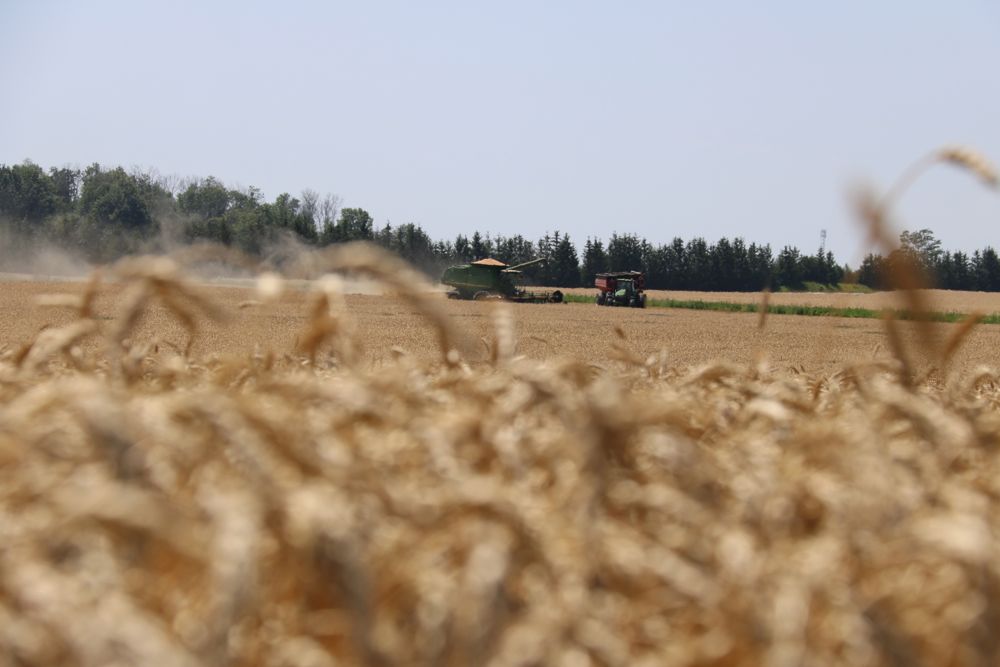The milling performance of Canadian food barley may be improved by blending it with wheat, opening up commercial potential for its use as a healthy ingredient.
Funded by the Agriculture Funding Consortium, with food barley varieties supplied by the Alberta Barley Commission, a one-year project conducted by Cigi (Canadian International Grains Institute) is aiming to provide innovative milling techniques and knowledge that would enhance the competitiveness of barley and wheat flour in health food and ingredient markets.
Cigi’s milling and analytical services areas are carrying out the milling and analysis on site.
Read Also

Tips and strategies for pre- and post-harvest weed control
Glacier FarmMedia – Sometimes the simplest solutions are the best ones. Breanne Tidemann, an Alberta-based researcher with Agriculture and Agri-Food…
Food barley has a number of beneficial health properties. Consumption can reduce the risk of coronary heart disease, it can modulate blood glucose levels, and it may offset certain cancers. These benefits are attributed to beta glucan, phytonutrients, antioxidants, and vitamins contained in barley. Health Canada approved a health claim in 2012 for foods containing 1.0 gram of barley beta glucan as a way to lower cholesterol.
The milling project builds on previous research Cigi conducted in 2008-09 in which new opportunities for foods made with barley were identified and developed in partnership with international and domestic companies. Toward the end of the project, a U.K. bakery asked Cigi to try blending 15 per cent barley flour with wheat flour for pan bread, says Ashok Sarkar, head of milling technology at Cigi. “Rather than blending flours, it was decided to blend the grains and mill them together. The initial co-milling of barley and wheat was successful but not pursued further at the time.”
Since hulls need to be removed before milling barley, hulless barley is easier to work with, says Elaine Sopiwnyk, Cigi director of science and innovation, who is leading the project. However, the hulless food barley varieties (especially those that are “waxy” with lower levels of amylose, a component of starch) are sticky when milling. This can pose a problem for millers although waxy starch properties are also associated with higher levels of beta glucan. Blending barley with wheat appears to resolve this issue during the milling process.
“Wheat is coarser and more granular, which helps with sifting and prevents the barley flour from clogging the sifter screen perforations,” Sarkar explains, adding that the project will use hulless barley ranging between a normal starch type to fully waxy. “Just imagine flours sifting through fine fabric — if you add sand it will keep the screen clean.”
In 2005 Sarkar successfully milled Millhouse, the first registered non-waxy hulless food barley variety in Canada, at a relatively high extraction rate of about 74.6 per cent. “I said then we could actually someday pull barley from one bin and wheat from another and mill them together. But that was just a hypothesis and nothing was done. Then this request from a bakery customer happened later so we tried it.”
The current project came about when Cigi’s milling results were presented at a meeting of barley researchers at the Richardson Centre for Functional Foods and Nutraceuticals. Sarkar says the Alberta Barley Commission (ABC) was in attendance and subsequently recommended that Cigi apply for funding for further work.
“ABC helped review the project proposal and provided three food barley samples for us to work with — two tonnes each of CDC McGwire (normal starch), CDC Rattan (partial waxy), and CDC Fibar (full waxy),” says Sopiwnyk. “The varieties will be used to determine what blend of wheat and barley will provide optimum milling performance and nutrition in the flour as a healthy ingredient which will help us develop guidelines on milling barley for the industry. Right now the use of food barley is limited in North America, but this project has the potential to increase its use.”
Sopiwnyk recently returned from a Cigi mission to Japan with other industry representatives to investigate that country’s use of food barley where it is used in an array of products including barley flour, beta glucan extract, sochu (liquor), mugicha (barley tea), miso, pearled barley, and rice extenders. The group also met with Japanese industry associations and processors of barley products, many of whom are current customers of Canadian food barley.















